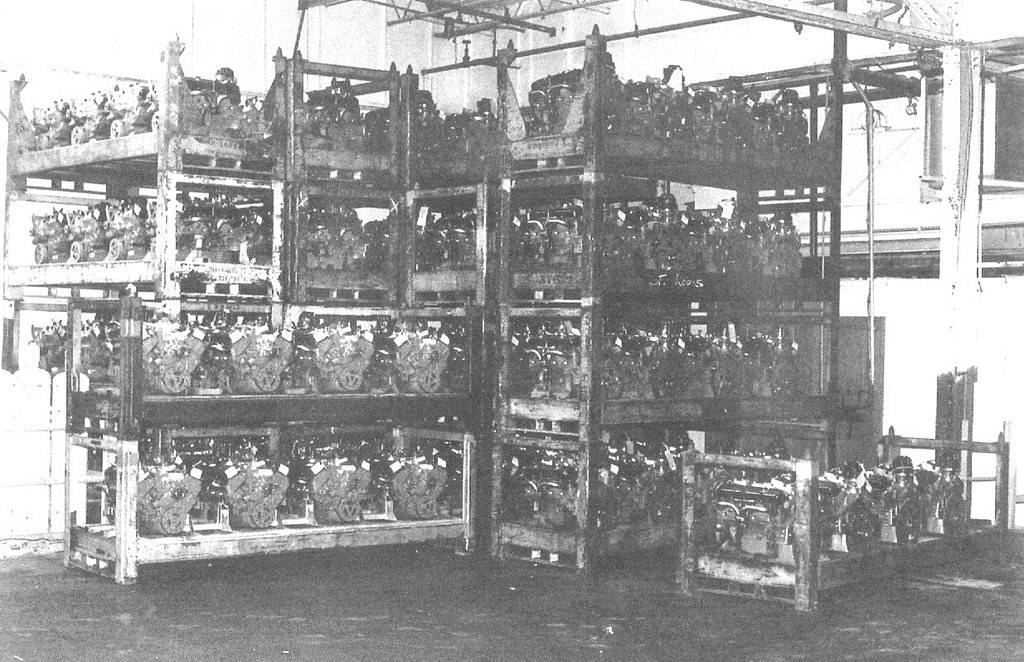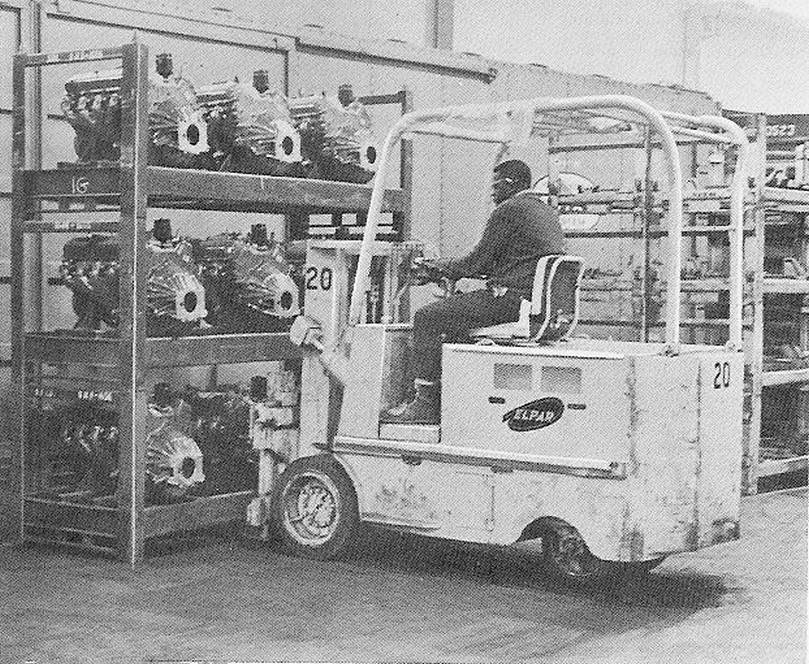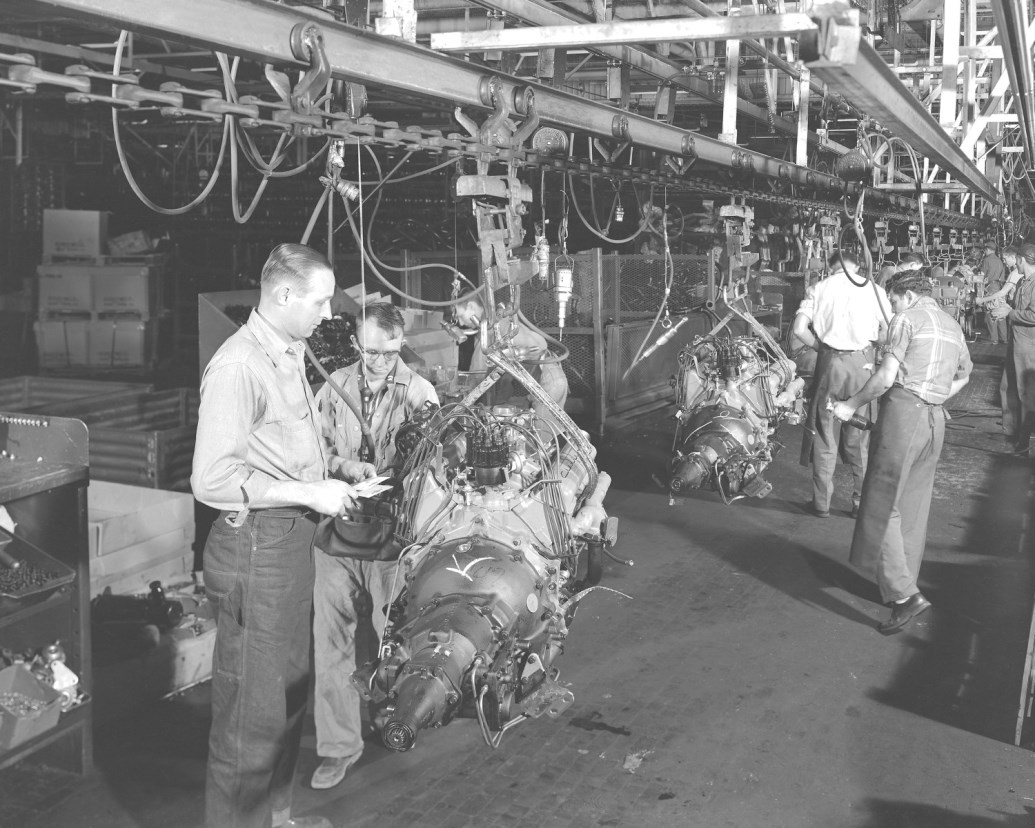
|

|

|
| C R G | CRG Reports | Exterior | Engine | 1967 Model ID |
| Numbers Decode | General Info | Interior | Transmission | 1968 Model ID |
| Drivetrain Decode | Options | Underhood | Chassis | 1969 Model ID |
CRG Research Report - © 2013-2019, Camaro Research Group
Camaro Engine Dress Operations
Author -|
Reviewed by the CRG Last Edit: 11-Jun-2019 Previous Edits: Original Release: 11-Jun-2019 & 2013 (as a pdf) |
|
|
|

|
After lubing and installing the throwout bearing (on manuals), the transmission was installed, along with the inboard clutch cross-shaft pivot ball; on an automatic, the converter bolts were driven while the flexplate was turned by an air-powered dummy starter tool, and the inspection cover was installed.
At this point, the VIN derivative for that car was stamped on the front engine pad; this VIN derivative number was also stamped on the transmission. On some 1969 applications, the engine VIN derivative was stamped on the as-cast surface adjacent to the oil filter instead of on the machined surface in front of the passenger side cylinder head. Most of the time, the same VIN gang-stamp was used for both the engine and transmission VIN stamps, but some 1969 vehicles have the engine and tranmission VIN stamps applied with different gang-stamps. It is unknown why this occurred.
As the engine continued down the line, the shifter assembly and linkage rods/levers were installed and adjusted, automatics got their oil fill tube and dipstick, and the Powerglide kickdown linkage was installed and adjusted later, after the carburetor was installed. The correct speedo gear and adapter sleeve were then installed based on the car’s axle ratio, along with the transmission mount.
The oil filter bypass valve, oil filter assembly and the oil fill tube in the intake manifold were installed, the engine was filled with oil, and the oil fill cap was installed. Manual transmissions were filled, and the automatics got their initial fill of ATF as well (they weren’t topped-off until after car start on the Final Line, as the converter didn’t fill until the engine was started).
The fuel pump pushrod was dipped in chassis grease and inserted, held in place by a substitute bolt in the front of the block, followed by the gaskets, mounting plate, and the fuel pump; the substitute bolt was then removed and replaced with the short bolt that came from the engine plant. The carburetor and gaskets were then installed, followed by the pump-to-carburetor fuel line and the remote choke thermostat. Heater hose fittings were added to the intake manifold and water pump after removing engine plant-installed plugs, and a vacuum fitting was added to the intake manifold when needed for Powerglide modulator lines, air conditioning, or power brakes.
The starter and its brace and battery ground cable came next, followed by the coil bracket, coil, and spark plug wire supports. The crank pulley, water pump pulley, fan and spacer (or fan and clutch), and the alternator and its mounting bracket and adjusting brace came next, followed by installing and tensioning the fan belt. A.I.R. pumps and air manifolds, valves, and hoses, A/C compressors and power steering pumps and hoses and their pulleys and belts and the radiator hoses were also installed at this point. Spark plug boot heat shields and plug wires and retainers were then installed, and engine mounts were assembled after the plug wires were installed.
|
|
The last operation on the dress line was the engine wiring harness installation, followed by inspection and repair, and the engine was then conveyed to the Chassis Line for installation in the subframe. At the installation point, the prop shaft and clutch cross-shaft were resting loose on the frame, ready for assembly.
It’s easy to determine which parts were installed on the Camaro engine dress line if questions arise. Any part that shows in the Assembly Manual with a part number was installed at the car assembly plant; if no part number is shown or the Assembly Manual illustration indicates “Part of engine assembly” or “existing”, it came as part of the engine assembly as-shipped from Flint V-8 or Tonawanda.
If an engine was found to be defective when the car was started at the end of the line or during Roll Test, that engine was removed and returned to Flint or Tonawanda for credit, and a new engine was dressed for that car and installed in Final Repair. Major internal engine repairs weren't done in assembly plants - they were neither equipped nor trained for that kind of work.
|
|